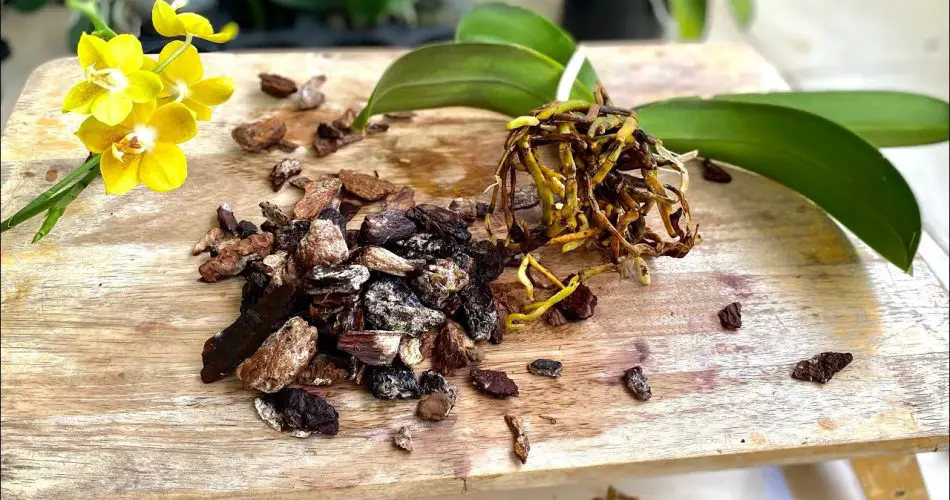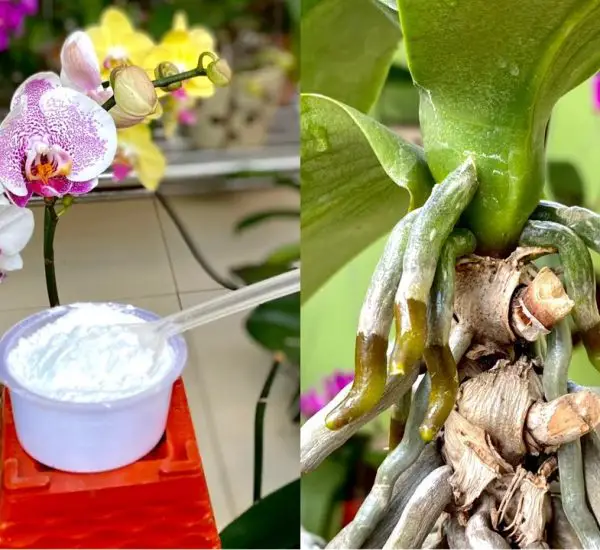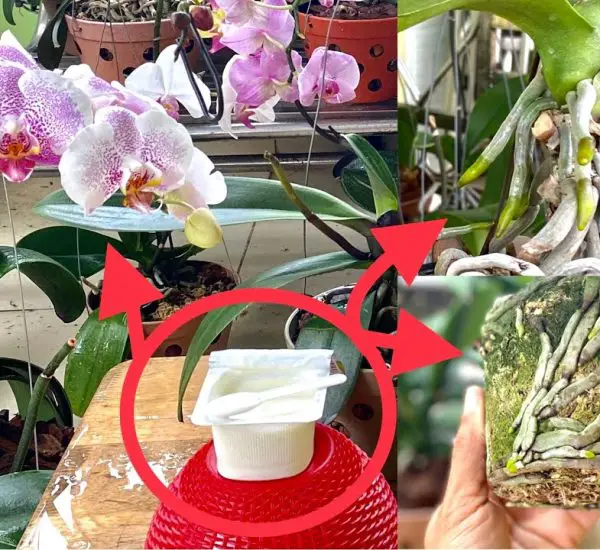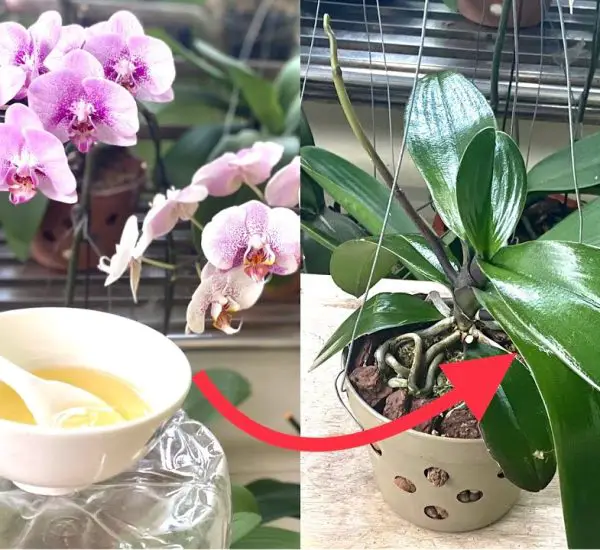Detecting Signs of Fungal Infection:
When caring for orchids, it’s crucial to be vigilant for signs of fungal infection. A few indicators include stunted growth despite regular care, a lack of development in young leaves, and the appearance of black spots on the roots. These blackened areas are potential breeding grounds for harmful bacteria and fungi, leading to rot. To tackle the issue effectively, it’s essential to check the roots and remove any old planting material that has fallen victim to the fungus.
Root Treatment and Cleaning:
Upon identifying infected roots with black spots, prompt action is necessary. Begin by cutting off all damaged roots. These blackened petioles, harboring harmful bacteria and fungi, must be thoroughly cleaned. Use 3% hydrogen peroxide diluted in water (5ml in 0.5 liters) to wipe the leaves evenly. This process not only cleans the leaves but also shields them from bacteria and fungi, fostering a healthier environment for growth. After cleaning, soak the orchid in the hydrogen peroxide solution for 30 minutes to ensure comprehensive treatment.
Direct Application for Intensive Care:
For localized infections, direct application of undiluted hydrogen peroxide to affected areas is beneficial. This method ensures that the fungus is directly targeted. After this intensive care, hang the orchid upside down in a cool place for about two days. This allows the cuts to dry thoroughly. Once dried, the orchid is ready for transplantation into a new pot. This decisive step helps eliminate the source of the fungus, preventing further spread and promoting a fresh start for the orchid.
Assured Transplantation with Effective Planting:
Choosing the right planting materials plays a crucial role in ensuring the orchid’s health and preventing future infections. Coconut shells, fixed with a string for stability, provide an excellent medium for the orchid to take root securely. Additionally, using pine bark in the pot helps maintain moisture, contributing to the orchid’s overall well-being. Placing the orchid in a cool, well-lit area completes the process. This planting method not only assures the orchid’s freedom from diseases but also facilitates robust development.
In conclusion, by promptly identifying and treating fungal infections in orchids, one can ensure the plant’s continued health and vitality. Adopting a systematic approach to root treatment, cleaning, direct application, and effective transplantation with suitable planting materials will set the stage for the orchid’s thriving growth.



